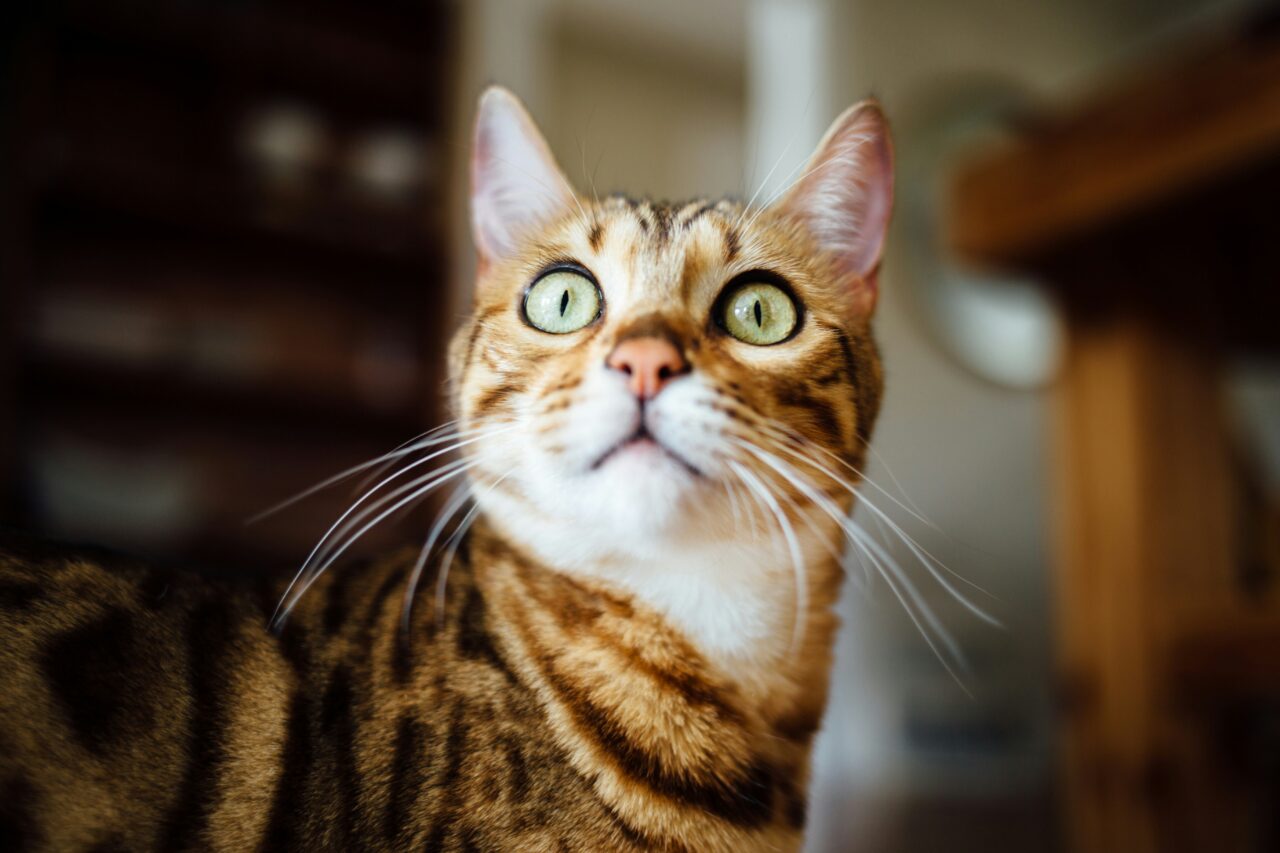📖 Table of Content:
Cats are mysterious creatures that communicate in subtle ways. Their silent signals convey a wealth of information about their emotions and desires. Understanding these signals can foster a deeper bond between you and your feline friend.
Here are 10 secret signals your cat uses to “speak” without making a sound. Each one offers a unique insight into their world, enhancing your ability to interpret their behavior and respond appropriately.
1. The Slow Blink
In the feline world, a slow blink is like a secret handshake of trust. When your cat offers you a slow, deliberate blink, it’s their way of saying, “I trust you.” Often referred to as a “cat kiss,” this simple gesture is filled with affection and comfort.
If you reciprocate with a slow blink, you can strengthen your bond with your cat. This silent exchange fosters calm and connection. Next time your cat gives you a slow blink, take a moment to appreciate the gesture and respond in kind—it’s a tender way to speak volumes without words.
2. Tail Position
Think of a cat’s tail as its personal flag of communication. When it’s upright with a gentle curve at the end, it’s a sign of a confident, friendly feline who’s in a good mood and eager to engage with you.
Conversely, a tail tucked between the legs signifies fear or submission. Observing these subtle tail movements allows you to gauge your cat’s mood and react accordingly. Understanding these signals allows you to create a supportive environment that meets your cat’s emotional needs.
3. Ear Movements
Like tiny antennas, a cat’s ears are always tuned in to its surroundings, giving you clues about their mood. When the ears point forward, it’s a sign of curiosity and attention, often seen during play or exploration. But if they’re pressed flat against the head, it’s a clear warning of fear or aggression. Watching these ear movements lets you tap into your cat’s feelings with ease.
By responding to these cues, you can offer comfort or space as needed, fostering communication and trust between you and your feline companion.
4. Whisker Position
Whiskers are not just for show; they play a crucial role in a cat’s communication. When a cat’s whiskers are pushed forward, it typically means they are engaged and interested in their surroundings.
This position often indicates curiosity or excitement, seen during playtime or hunting activities. In contrast, whiskers pulled back suggest caution or fear. By observing these subtle changes, you can gauge your cat’s mood and respond appropriately—whether by joining in on the fun or providing reassurance.
5. Purring and Vibrations
Purring is perhaps the most well-known silent communication signal cats use. While purring is often associated with contentment, it can also indicate stress or discomfort.
Understanding the context is key. For instance, a cat purring while being petted likely expresses happiness, while purring in a vet’s office may indicate fear. By tuning into these vibrations, you can better meet your cat’s needs, whether by providing affection or alleviating stress. This nuanced understanding enhances your connection with your cat.
6. Body Posture
The way a cat carries its body can tell you a great deal about its emotions. When a cat arches its back and raises its fur, it’s usually expressing fear or aggression, trying to seem larger to protect itself. A relaxed, sprawled-out position, however, shows that the cat feels comfortable and trusts its environment. Recognizing these signs can help you respond appropriately to your cat’s feelings.
Whether it’s offering a calming presence or engaging in play, understanding these signals can greatly improve your relationship with your cat.
7. Eye Dilation
A cat’s eyes are incredibly expressive, with pupil dilation revealing much about their state of mind. Dilated pupils may indicate excitement, fear, or aggression, depending on the situation.
For example, during playtime, dilated pupils often signify enthusiasm and readiness to pounce. However, sudden dilation in a calm setting may suggest anxiety. By understanding these visual cues, you can better interpret your cat’s feelings and react appropriately—whether by engaging in play or providing comfort.
8. The Silent Meow
When a cat performs a silent meow, it’s a tender and mysterious way of communicating. With its mouth open but no sound, it often shows affection or a quiet request for attention. This behavior is most commonly directed at those the cat feels safe with. Offering a gentle touch or response can create a deeper connection.
Appreciating this subtle form of communication deepens your understanding and relationship with your feline friend.
9. Kneading
Cats often engage in kneading, a comforting behavior that traces back to their kitten days when they kneaded their mother’s belly to stimulate milk flow. Picture your cat rhythmically pressing its paws into a cozy blanket or cushion. This tender act signifies relaxation and contentment, and many cats purr while kneading, adding to the calming mood.
Various theories suggest that kneading marks territory or simply feels pleasurable. Next time your cat kneads your lap, consider it a heartwarming gesture of affection, a silent way of saying, “I trust you.” It’s a shared moment of peace.
10. Scratching
Scratching isn’t just about sharpening their claws for cats—it’s an important way to communicate and stay active. Imagine a spirited tabby stretching its claws as it fiercely scratches a post. This activity helps cats relieve stress, mark their territory through scent glands in their paws, and maintain their claws in optimal shape.
Providing a proper scratching post can save your furniture from feline artistry. Understand this primal need, and you’re tapping into your cat’s natural instincts. Scratching is their way of keeping fit and asserting their presence in their environment.










